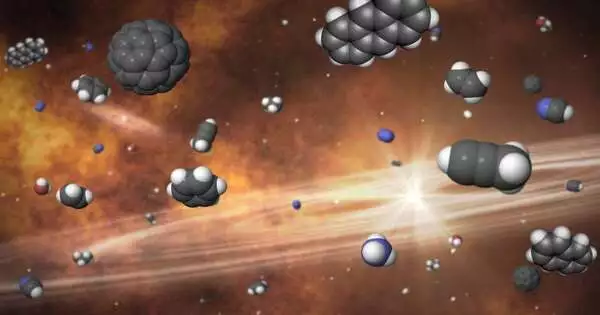In the young star cluster, the Perseus Molecular Cloud, which is 2-3 million years old, Susan Iglesias-Groth of the Instituto de Astrofsica de Canarias (IAC) and Martina Marn-Dobrincic of the Polytechnic University of Cartagena have found a significant number of prebiotic molecules.
A few of these biological molecules are thought to be fundamental building blocks for the synthesis of more complex molecules like the amino acids, which created the genetic code of early microorganisms and enabled the emergence of life on Earth. Astrophysics faces a significant challenge in figuring out the distribution and abundances of these precursor molecules in areas where planets are almost certainly forming.
One of the areas closest to our solar system where stars form is the Perseus Cloud. Since many of its stars are young, the physical processes that give rise to planets can occur within their protoplanetary disks.
“It is an amazing organic chemistry laboratory. They are complex molecules of pure carbon that frequently serve as building blocks for important components in life.”
Susan Iglesias-Groth, of the Instituto de Astrofísica de Canarias (IAC)
Iglesias-Groth, who discovered fullerenes in the same cloud in 2019, calls it “a remarkable laboratory of organic chemistry.”. These intricate pure carbon molecules frequently serve as the foundation for the essential molecules of life. “.
Molecular hydrogen (H2), hydroxyl (OH), water (H2O), carbon dioxide (CO2), and ammonia (NH3), as well as several carbon-bearing molecules that may play a significant role in the production of more complex hydrocarbons and prebiotic molecules, such as hydrogen cyanide (HCN), acetylene (C2H2), diacetylene (C4H2), cyanoacetylene (HC3N), cyanobuta.
The data also demonstrate the presence of more complicated molecules like fullerenes C60 and C70 and polycyclic aromatic hydrocarbons (PAH). Iglesias-Gorth claims that the molecular makeup of IC 348 “seems to be very rich and diverse.”. The novel aspect is that we can now observe the molecules in the diffuse gas that is forming stars and protoplanetary disks. “.
Prebiotic molecules being found at interstellar locations this close to star clusters raises the possibility that complex organic molecules are being formed on young planets as a result of accretion processes. According to Marina-Dobrincic, “These essential molecules might have been provided to the nascent planets in the protoplanetary disks and might in this way help to produce there a route towards the molecules of life.”.
The data collected by NASA’s Spitzer satellite served as the foundation for the two researchers’ detection. The powerful James Webb Space Telescope (JWST) will be used as a next step. Iglesias-Groth concludes: “The spectroscopic capability of the JWST could provide details about the spatial distribution of all these molecules and extend the present search to others that are more complex, giving higher sensitivity and resolution that are essential to confirm the very probable presence of amino acids in the gas in this and other star-forming regions.
The study has been published in Monthly Notices of the Royal Astronomical Society.
More information: Susana Iglesias-Groth et al, A rich molecular chemistry in the gas of the IC 348 star cluster of the Perseus Molecular Cloud, Monthly Notices of the Royal Astronomical Society (2023). DOI: 10.1093/mnras/stad495





